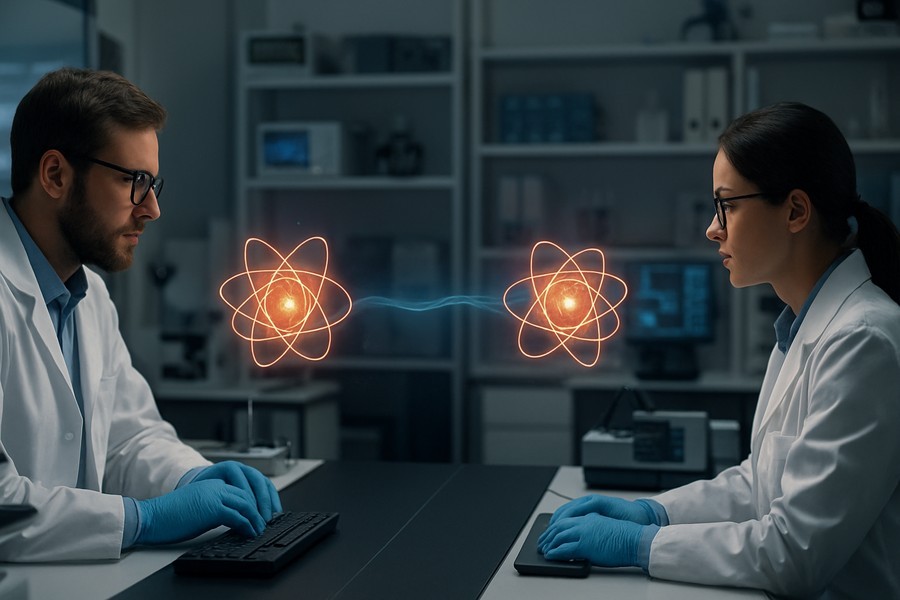
Groundbreaking Quantum Communication Achieved by Scientists
Remarkable steps have been taken in the realm of quantum physics. A team of scientists in Australia has managed to establish a connection, known as a 'quantum entangled state', between two atoms located far apart from each other. This connection was made possible through the use of electrons to form a bridge between the two atoms.
Deeply Connected Particles: The Power of Quantum Entanglement
Quantum entanglement is a fascinating concept in physics where two individual particles become so deeply connected that they no longer function independently. This means that if one particle changes, the other one also changes - no matter how far apart they are. This entanglement creates a bond that is not affected by distance, a phenomenon that has scientists buzzing with excitement.
Quantum Computing: A Leap into the Future
The achievement made by these Australian scientists is not just a cool science experiment, but it also holds the potential to revolutionize the future of computing. This is a big step forward in the development of quantum computers, which are highly anticipated for the advanced capabilities they could offer. Quantum computers have the potential to perform calculations at a speed and complexity far beyond what is currently possible.
Unlocking The Potential of Future Microchips
The researchers achieved the quantum entangled states by manipulating the spins of two atomic nuclei. This breakthrough could provide the foundation for creating advanced microchips required for quantum computing. The most exciting part is that these future microchips could potentially be created using currently available technology and manufacturing processes.
Communicating Atoms: Quantum 'Telephones'
The study, published in a science journal, demonstrated an operation between the nuclei of two phosphorus atoms that were up to 20 nanometers apart. The atoms were connected by separate electrons, which facilitated the operation between the two nuclei. You might think of these electrons as 'phones' that allow the atoms to communicate and interact with each other, even though they are far apart.
Challenges and Future Possibilities
While this achievement is groundbreaking, it also presents its own set of challenges. The range over which an electron can spread and interact with multiple atomic nuclei is limited. Adding more nuclei to the same electron makes it difficult to control each nucleus individually.
To explain this in simple terms, imagine that up until now, atomic nuclei were like individuals in a soundproof room. They could communicate with each other as long as they were all in the same room. But they couldn't hear anything from the outside, and there was a limit to how many people could fit inside the room. With this new discovery, it's as if these people were given telephones to communicate with individuals in other rooms. The rooms remain quiet, but now conversations can occur between many more individuals, even if they are far away.
The researchers also noted that this method is robust and scalable. They initially used two electrons, but they believe that in the future, they can add more electrons and force them into an elongated shape to spread out the nuclei even further. This could provide even more exciting possibilities for the future of quantum computing.
